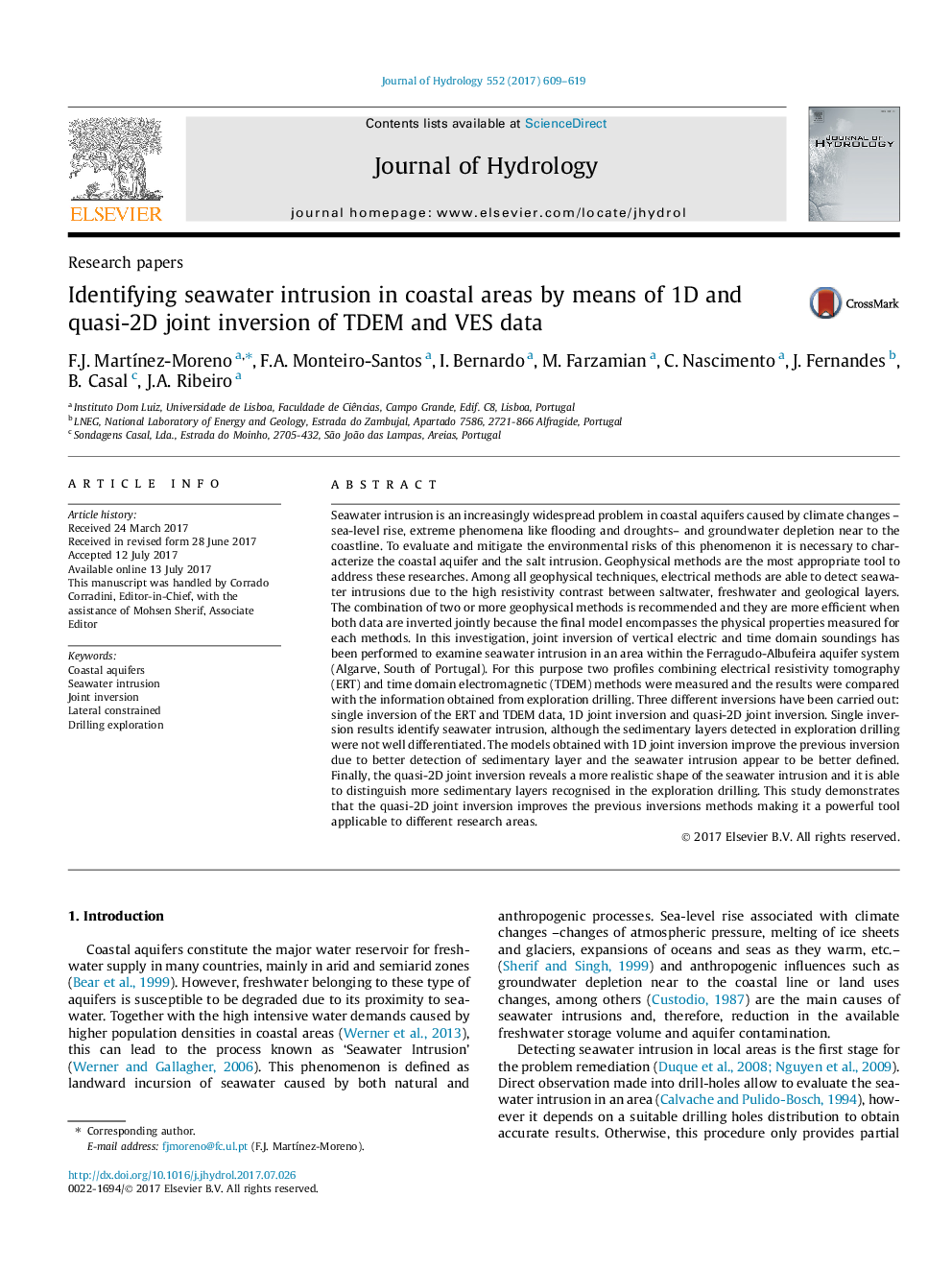| کد مقاله | کد نشریه | سال انتشار | مقاله انگلیسی | نسخه تمام متن |
|---|---|---|---|---|
| 5771186 | 1629902 | 2017 | 11 صفحه PDF | دانلود رایگان |

- Seawater intrusion is an increasingly problem in coastal aquifers.
- Electrical and electromagnetic methods are combined to detect seawater intrusion.
- Traditional single data inversion detects such intrusion with uncertainties.
- 1D joint inversion improves the single data inversion and distinguish more layers.
- Quasi-2D inversion better defines geology and seawater intrusion.
Seawater intrusion is an increasingly widespread problem in coastal aquifers caused by climate changes -sea-level rise, extreme phenomena like flooding and droughts- and groundwater depletion near to the coastline. To evaluate and mitigate the environmental risks of this phenomenon it is necessary to characterize the coastal aquifer and the salt intrusion. Geophysical methods are the most appropriate tool to address these researches. Among all geophysical techniques, electrical methods are able to detect seawater intrusions due to the high resistivity contrast between saltwater, freshwater and geological layers. The combination of two or more geophysical methods is recommended and they are more efficient when both data are inverted jointly because the final model encompasses the physical properties measured for each methods. In this investigation, joint inversion of vertical electric and time domain soundings has been performed to examine seawater intrusion in an area within the Ferragudo-Albufeira aquifer system (Algarve, South of Portugal). For this purpose two profiles combining electrical resistivity tomography (ERT) and time domain electromagnetic (TDEM) methods were measured and the results were compared with the information obtained from exploration drilling. Three different inversions have been carried out: single inversion of the ERT and TDEM data, 1D joint inversion and quasi-2D joint inversion. Single inversion results identify seawater intrusion, although the sedimentary layers detected in exploration drilling were not well differentiated. The models obtained with 1D joint inversion improve the previous inversion due to better detection of sedimentary layer and the seawater intrusion appear to be better defined. Finally, the quasi-2D joint inversion reveals a more realistic shape of the seawater intrusion and it is able to distinguish more sedimentary layers recognised in the exploration drilling. This study demonstrates that the quasi-2D joint inversion improves the previous inversions methods making it a powerful tool applicable to different research areas.
Journal: Journal of Hydrology - Volume 552, September 2017, Pages 609-619